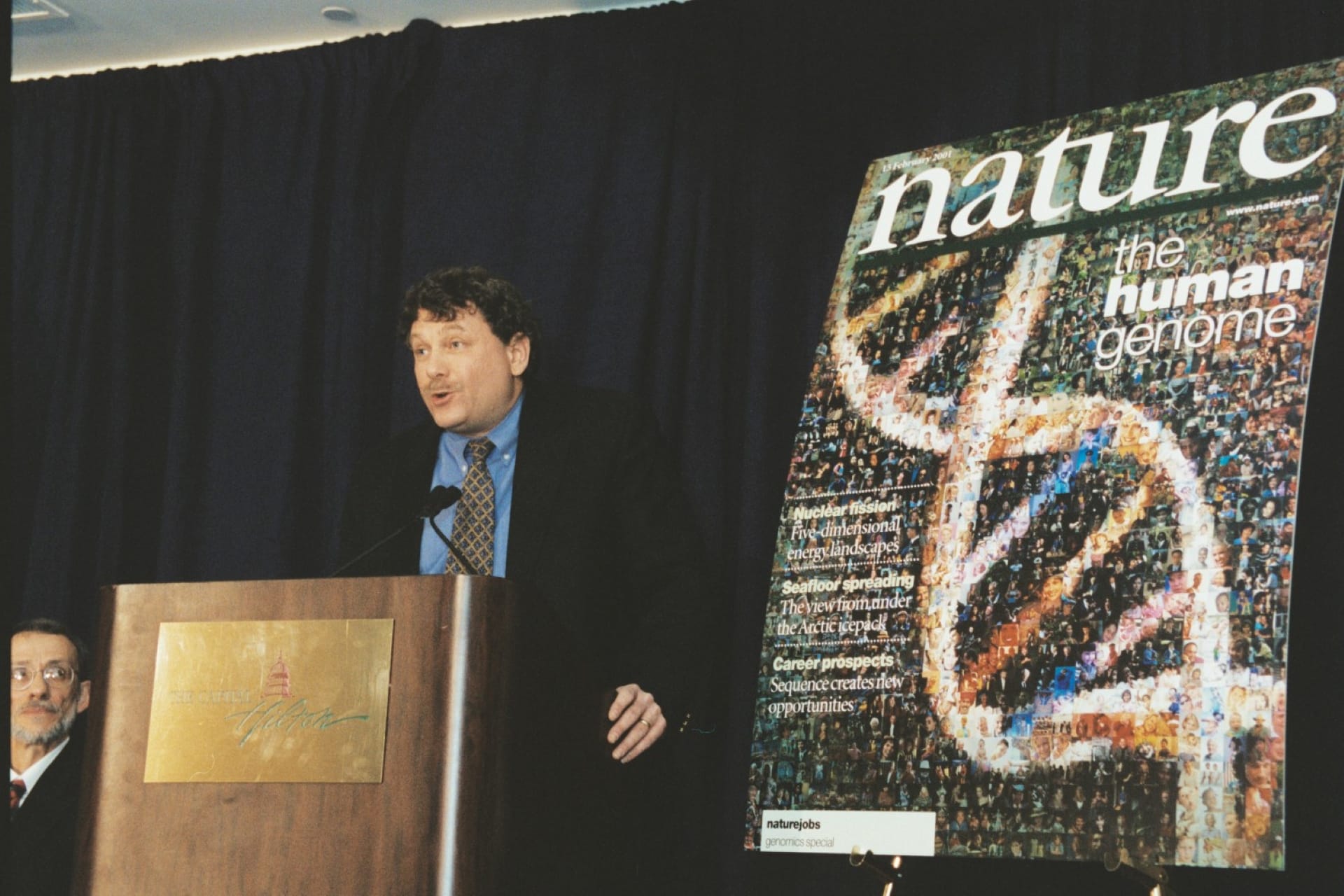When was the Human Genome Project completed?

In 2003, two years ahead of schedule, scientists announced that the human genome had been sequenced with an accuracy of 99.99%. It was described as ‘the end of the beginning’.
Key terms
Genome
The complete set of genetic instructions required to build and maintain an organism.
DNA sequencing
The process of determining the order of bases in a section of DNA.
“The end of the beginning”
In 2003, two years ahead of schedule, the Human Genome Project announced that it had finished sequencing nearly all of the human genome – with 99.99% accuracy.
The milestone – two years ahead of schedule and considerably under budget – coincided with the 50th anniversary of the discovery of the structure of DNA.
A year later, the publication of the finished ‘gold standard’ sequence appeared in the journal Nature. In the article, the authors commented that the Human Genome Project provided “an essential foundation for the sequencing and analysis of additional large genomes”.
Having set out to record the entire genome, the project achieved more than 92% of the genome – as much as was technologically possible at the time. Various projects have slowly filled up the missing 8%, with the complete sequence published in 2022.
What have we learned from the completed Human Genome Project?
The finished sequence has revealed a huge amount of information about the human genome.
For example, it confirmed what we found in the draft sequence – that the human genome has many fewer genes than originally thought. Just 10 years before, scientists had believed that humans had about 100,000 genes, where we actually have around 20,600 protein-coding genes in our genome.
The project has transformed the way genetics research is done. With the human genome sequence completed, along with the genome sequences of other organisms, such as C. elegans, better computer models and other improved resources, scientists now had a much clearer and more reliable picture of what our genome looks like.
And it has ushered in a new era of healthcare, bringing new approaches to disease diagnosis and drug design. For example, because of the project, scientists have discovered thousands of genetic variations involved in common diseases such as cancer, heart disease and diabetes.
The scientists who worked on the sequence, people like Francis Collins, John Sulston, Eric Lander and Bob Waterston, created a profoundly valuable resource, which others could use to perform science that would otherwise have been inconceivable. They have provided other scientists with an essential tool for genetic research.
